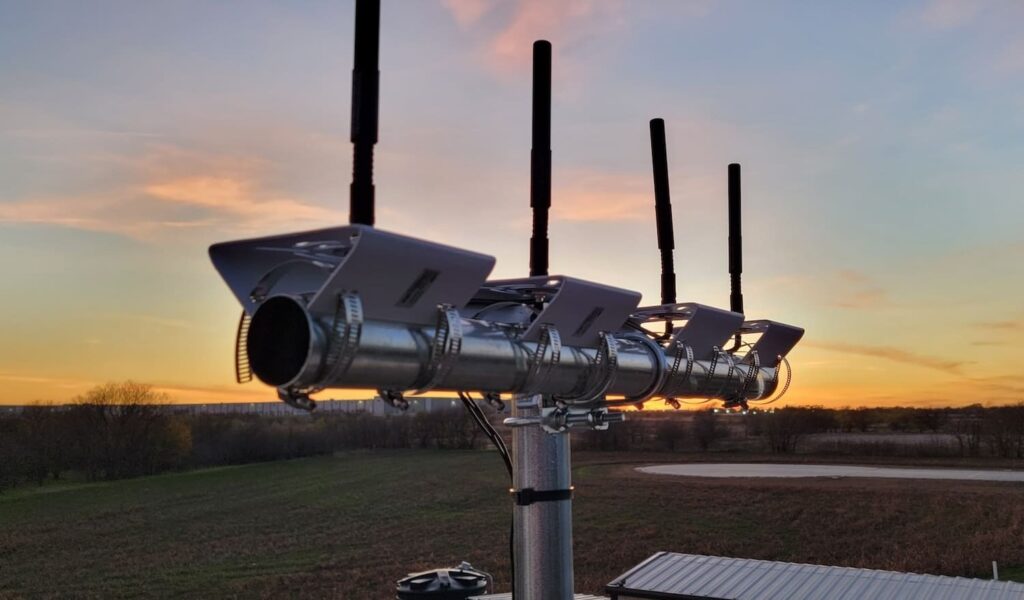The aerospace sector stands on the brink of transformation as Advanced Air Mobility (AAM) takes flight. These cutting-edge technologies will not only integrate new forms of transportation into our current mobility ecosystem but present significant opportunities for economic growth. Perhaps most importantly, the success of AAM aircraft in the real world hinges on the development of robust infrastructure and fully integrated logistics systems.
The Importance of Infrastructure
AAM aircraft, primarily encompassing highly automated uncrewed electrically powered aircraft, represent a new paradigm in air transportation. Their commercialization will create a future where goods and passengers are transported with unprecedented efficiency and reduced environmental impact. However, challenges like government alignment, infrastructure readiness (like power sources and charging stations), and cautious regulatory bodies, pose significant hurdles.
Today, AAM technology is being developed by traditional aerospace companies as well as startups around the globe. But commercializing AAM aircraft requires more than innovation. It requires the development and integration of critical infrastructure that supports the operational ecosystem for future electric vertical takeoff and landing (eVTOL) aircraft and along with crew-optional or unmanned aircraft systems. AAM-specific infrastructure includes multimodal compatibility, 5G connectivity, sensory systems needed for communications, navigation, and surveillance, and a skilled workforce that can support this rapidly evolving industry.
Innovation Beyond Infrastructure
Until now, the AAM industry has kept its focus on innovation, but with commercialization quickly approaching, companies have begun shifting their attention to air mobility infrastructure and ecosystems that will continue to support them as they scale. Places like the AllianceTexas Mobility Innovation Zone (MIZ) are uniquely positioned to support the AAM industry and serve as a catalyst for overcoming existing barriers. The MIZ is a first-of-its-kind, real-world ecosystem that brings cutting-edge technologies to commercialization at a faster rate, offering a unique set of air and surface logistic assets, including Perot Field Fort Worth Alliance Airport, BNSF intermodal hub, and a flight test center in addition to unparalleled access to resources and partnerships that are critical to scaling and commercializing AAM technologies.
Manna Drone Delivery, an Ireland-based drone delivery company, entered the North American market placing its first commercial operation within the MIZ, benefits from the robust infrastructure of the MIZ. For innovative companies like Manna to thrive, they require a forward-thinking and supportive environment where public-private partnerships are possible, and community members are receptive to their work as much as they require the physical infrastructure needed to test and scale. Thanks to a collaboration between Manna and Hillwood, Manna completed its first flight in the U.S., launching from a delivery hub located inside the MIZ last October. The Manna Aero drone delivered food, beverages, and candy from national and local retailers to Pecan Square, a Hillwood residential community. The on-demand approach to last-mile delivery is just one of many commercial drone innovations happening at the MIZ and will eventually scale to include a select number of Hillwood’s residential developments in North Texas. As part of the MIZ, Manna has been able to showcase the viability of AAM in a real-world setting and leverage the MIZ’s strong partnership with public sectors to accelerate its journey toward commercialization.
Recently, the joint NASA/USAF Agility Prime program successfully installed a high-bandwidth air-to-ground and air-to-air communications network at the MIZ. This initiative is a collaborative effort of the North Texas Cohort, including the Helicopter Institute, which provided the surrogate eVTOL aircraft, Unmanned Experts (UMEX), Advanced Air Mobility Texas (AAMTEX), and Hillwood at the AllianceTexas Flight Test Center. A collaboration with NASA and other partners in 2024 aims to transform Fort Worth and Tarrant County into a premier Urban Testbed for Advanced Air Mobility demonstrations. This ambitious endeavor will leverage the high-bandwidth network to ensure the MIZ remains at the forefront of urban air mobility innovation, setting new aerial communication and operation standards.
The AllianceTexas Mobility Innovation Zone Ecosystem
Due to its potential economic impact and national security implications, the United States has prioritized achieving AAM leadership. The future of air mobility, which includes unmanned aircraft systems (UAS) and other commercial drone applications, made substantial progress in 2023. Companies around the world are pressing forward with ambitious plans to create exciting new aircraft and technologies while the AAM sector generated $4.5 billion in disclosed funding last year, signaling its continued momentum.
The MIZ is an ideal hub for AAM innovation, attracting mobility visionaries, logistics companies willing to integrate AAM into their business, and infrastructure companies willing to build and establish aircraft corridors and the associated hardware needed to fully commercialize. Its unique mixed-use ecosystem offers a critical advantage within its vibrant community which nurtures both personal and professional growth, making AllianceTexas a magnet for talent crucial to the AAM industry. Additionally, the rich legacy and expertise of Hillwood, with its deep roots in aviation and innovation, provide invaluable guidance in navigating the intricate landscape of AAM commercialization, further cementing the MIZ as a pivotal player in the industry’s progression.
The journey towards commercialization and full integration of AAM aircraft and logistics systems is complex and multi-faceted. The MIZ stands at the forefront, demonstrating that with the right infrastructure, strategic partnerships, and a supportive ecosystem, the barriers to AAM commercialization can be overcome. While the adoption of automated commercial drones and other uncrewed aircraft might be a graduated evolution, the efforts and progress at the MIZ serve as a global beacon, guiding the way toward a new era in air mobility.
